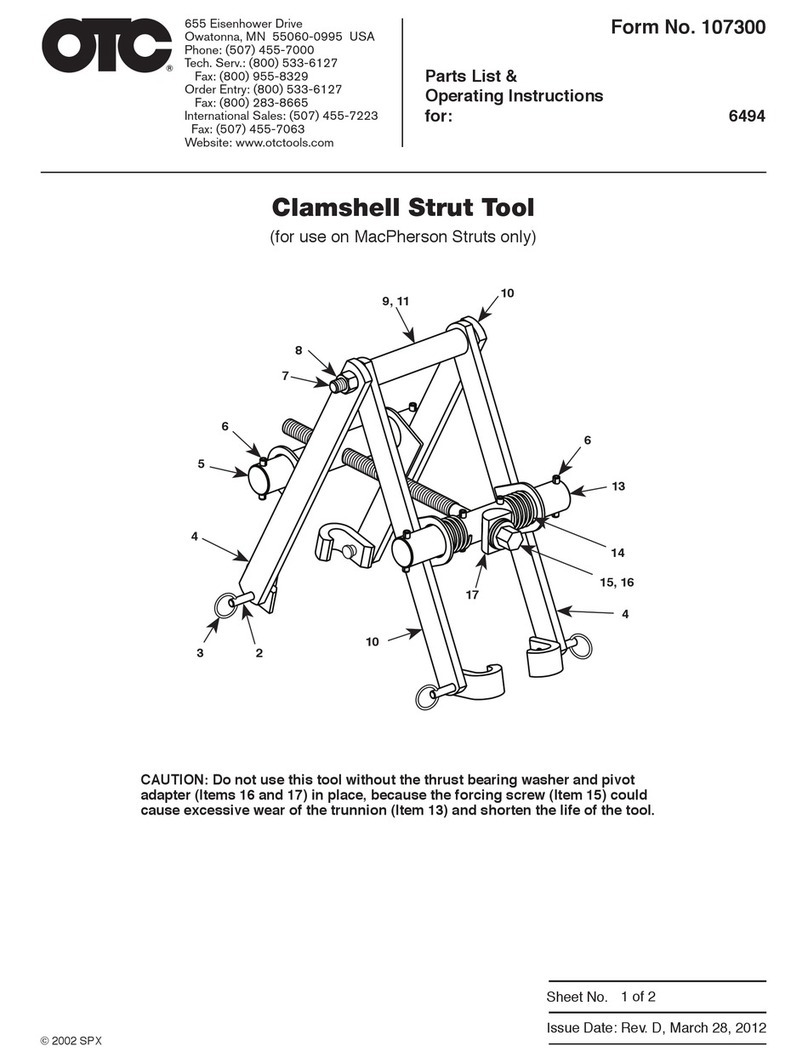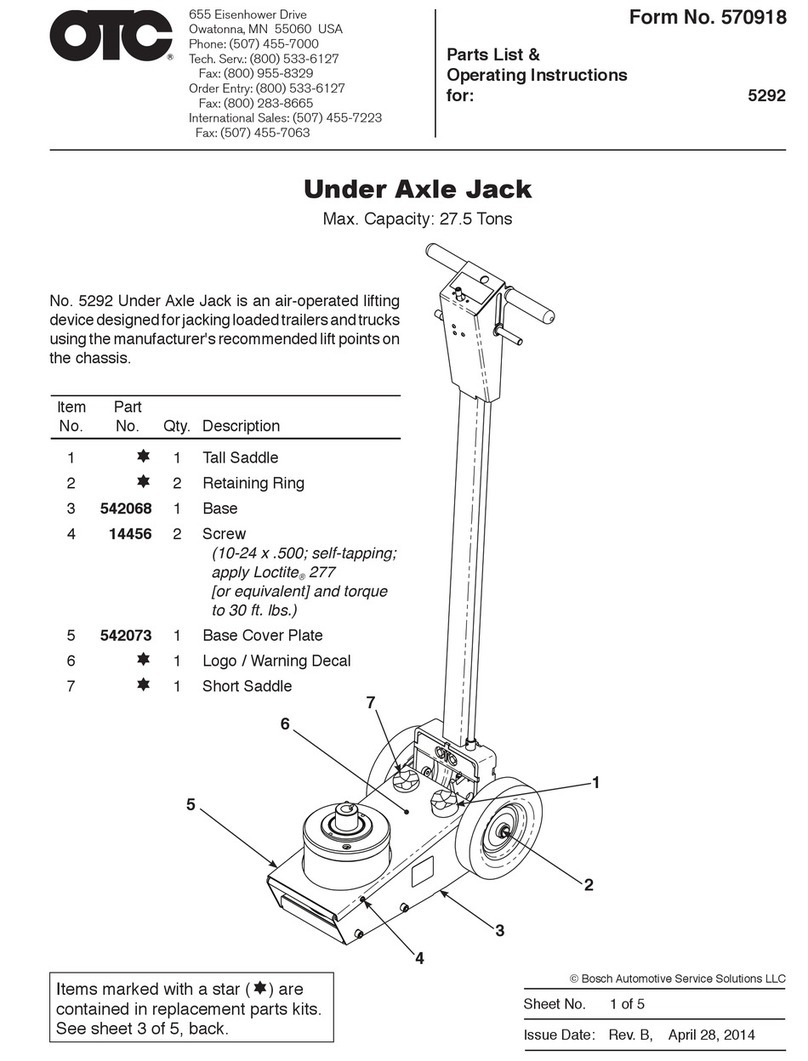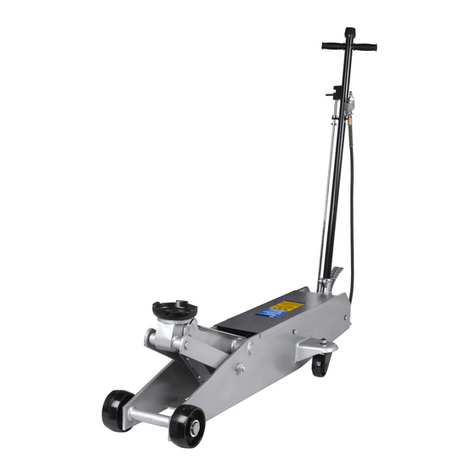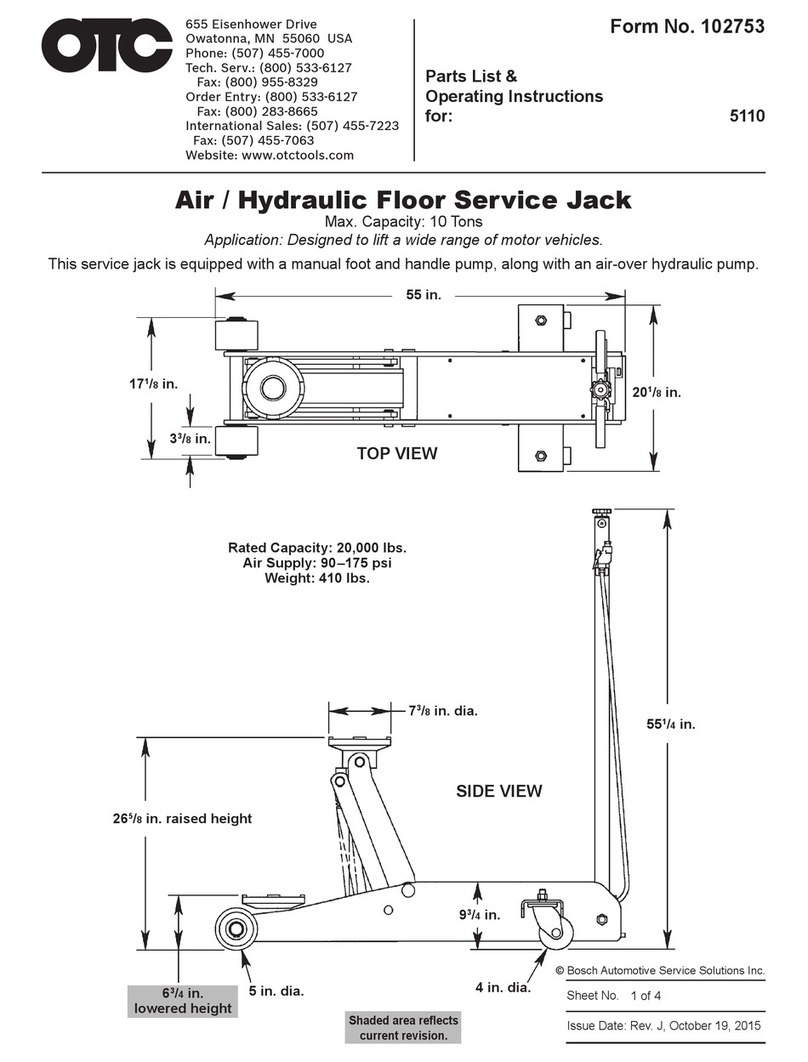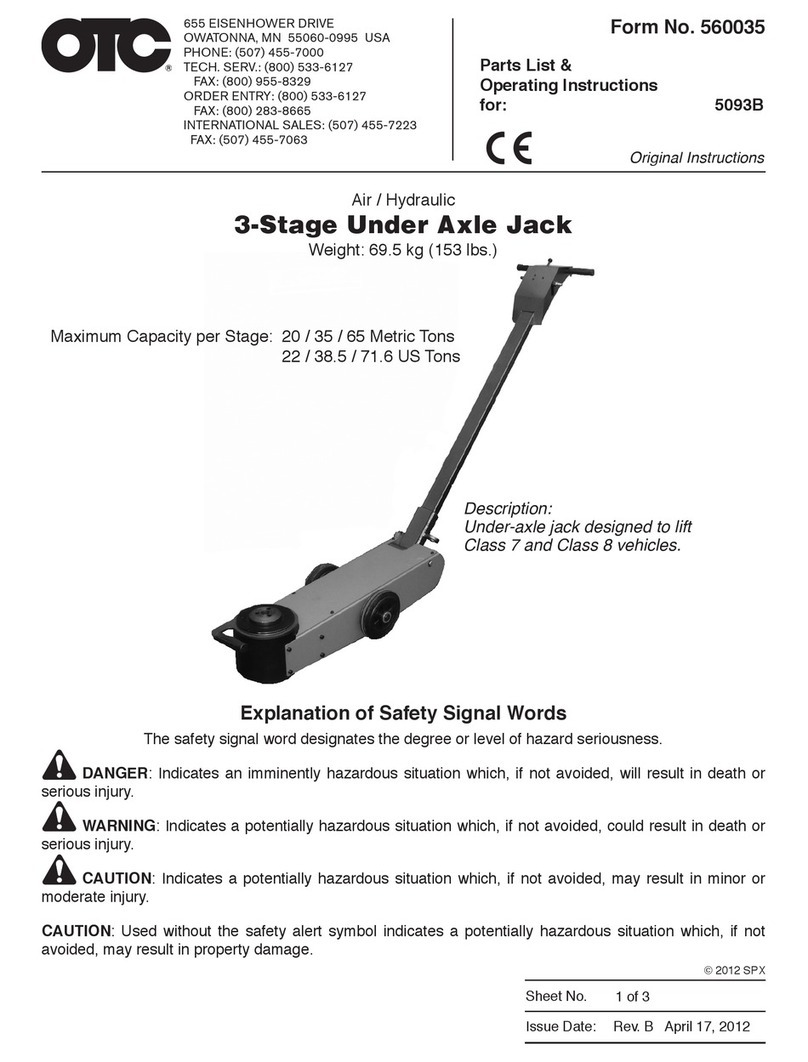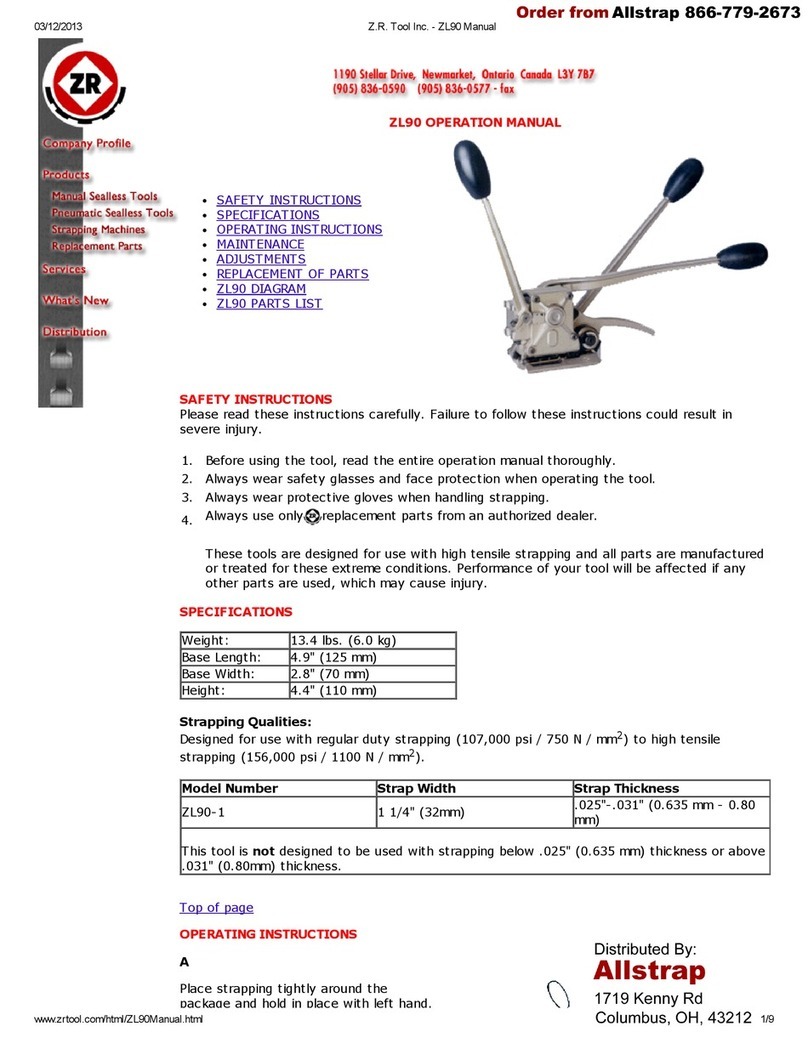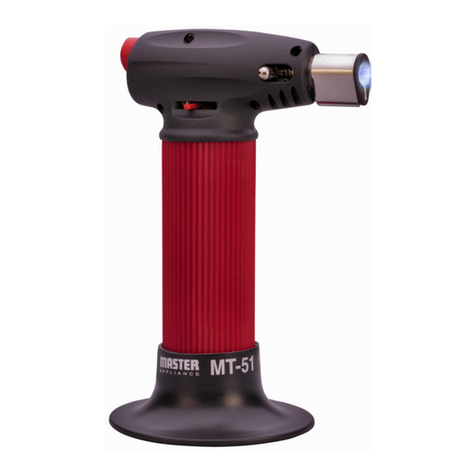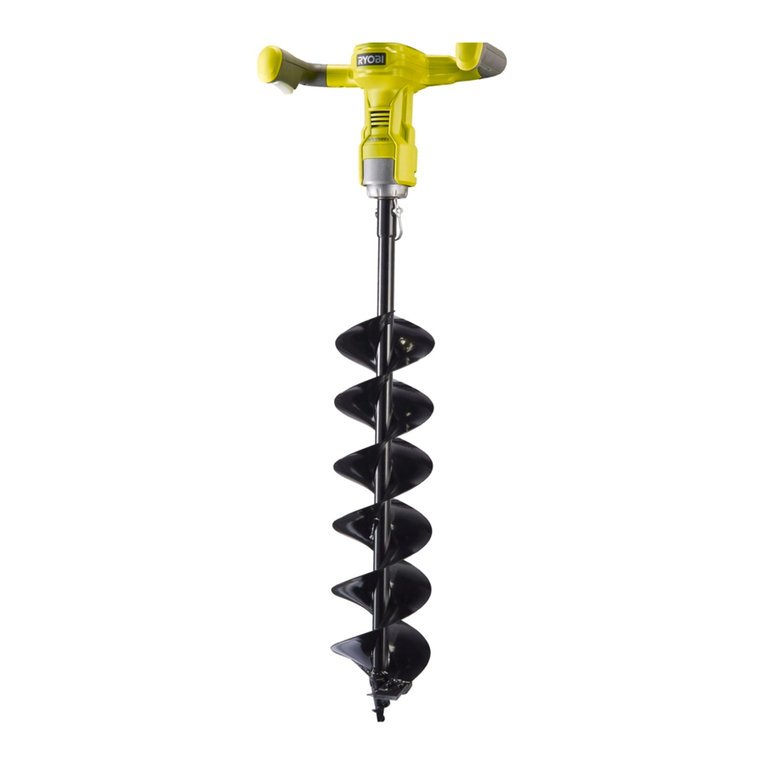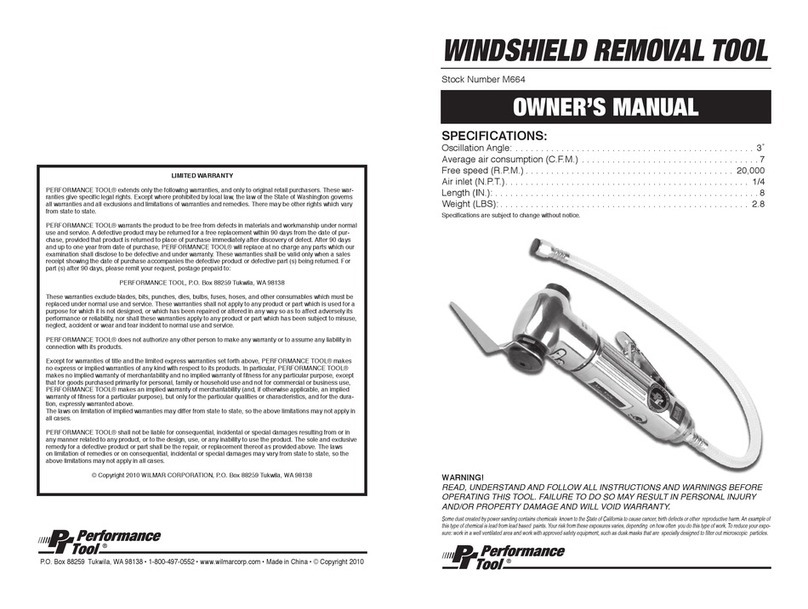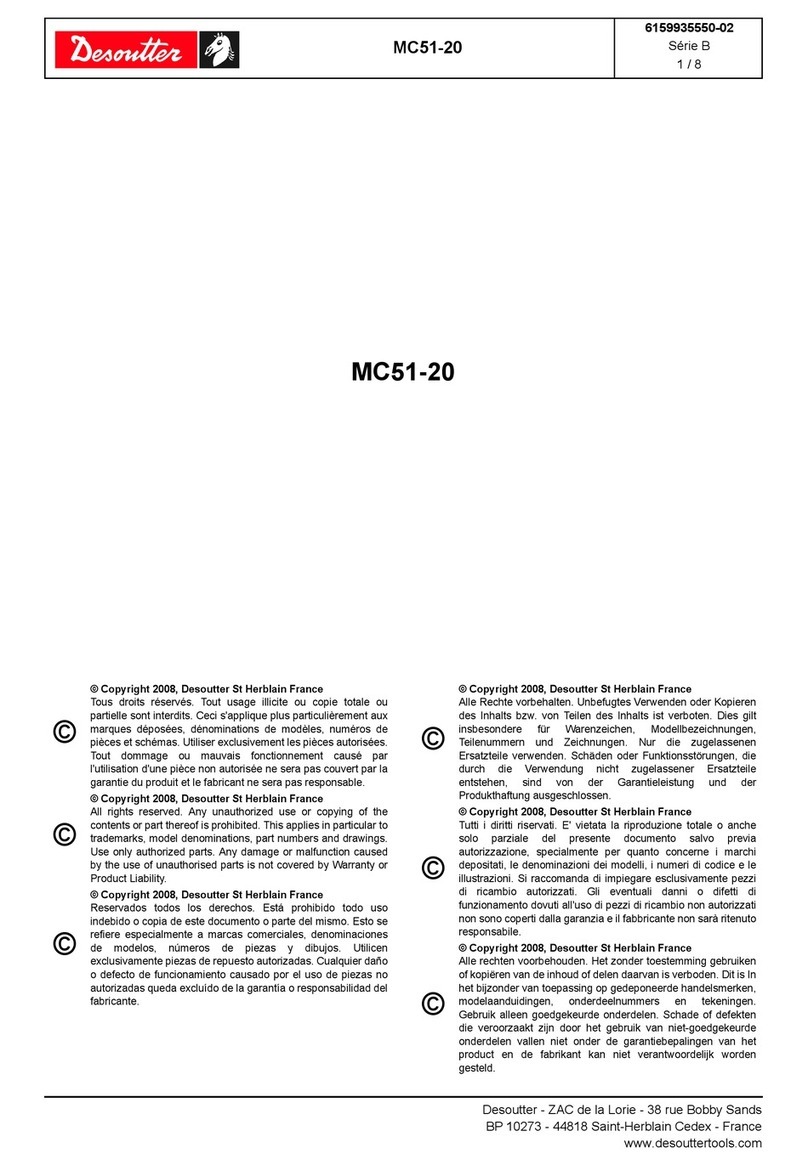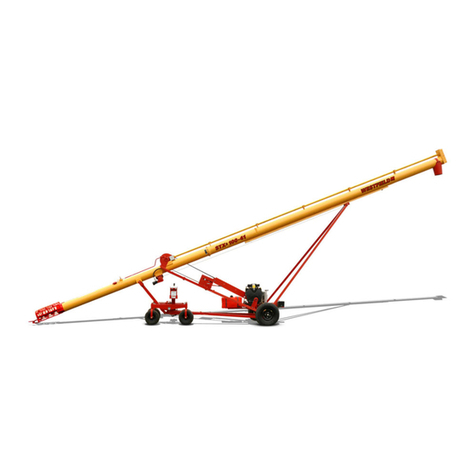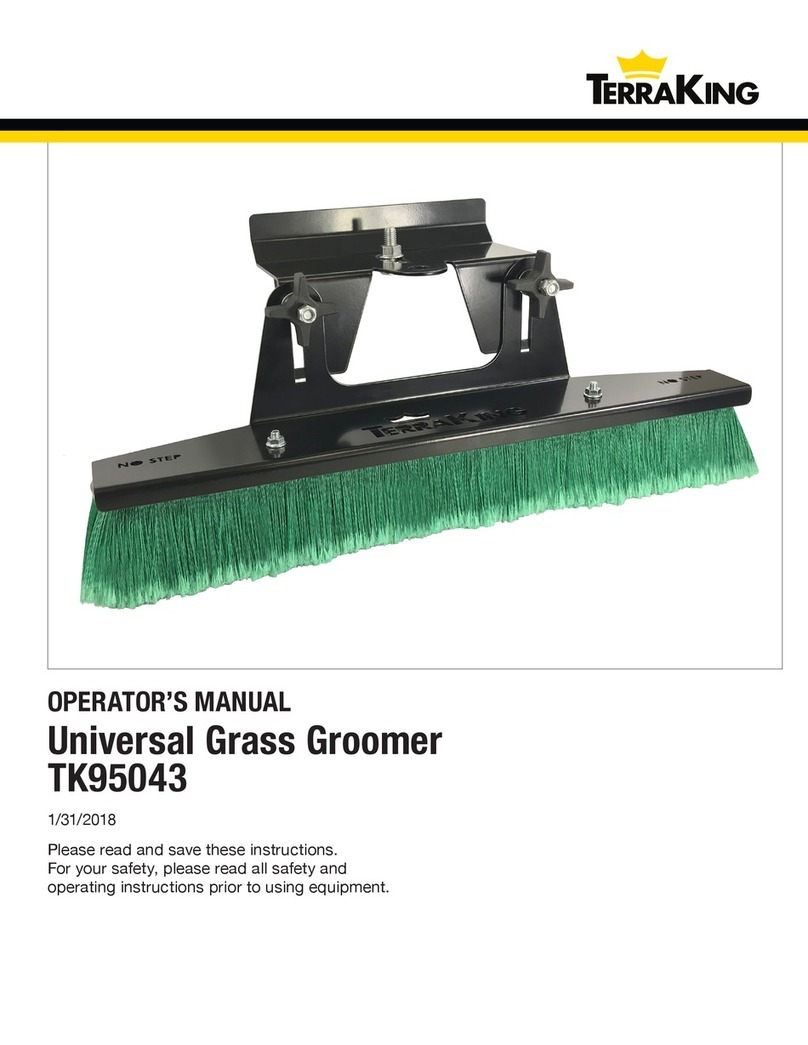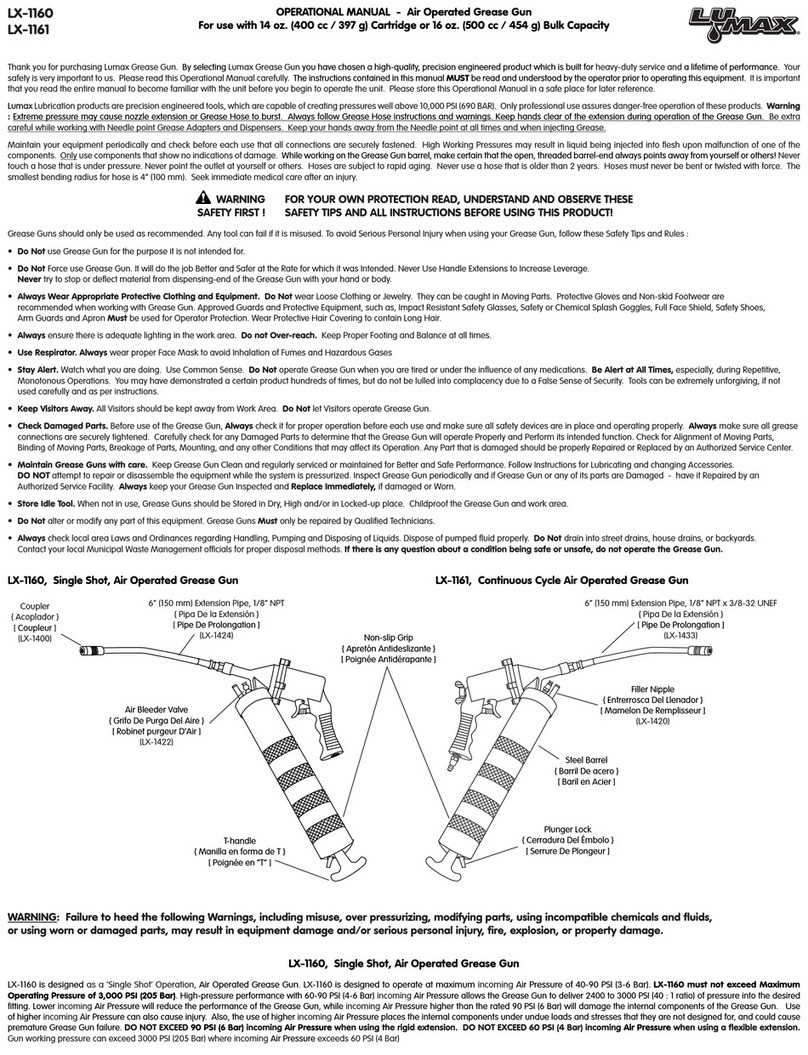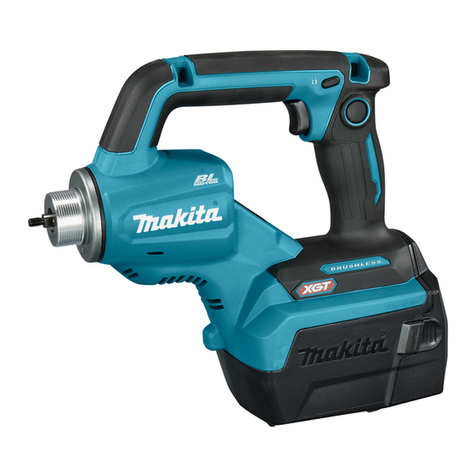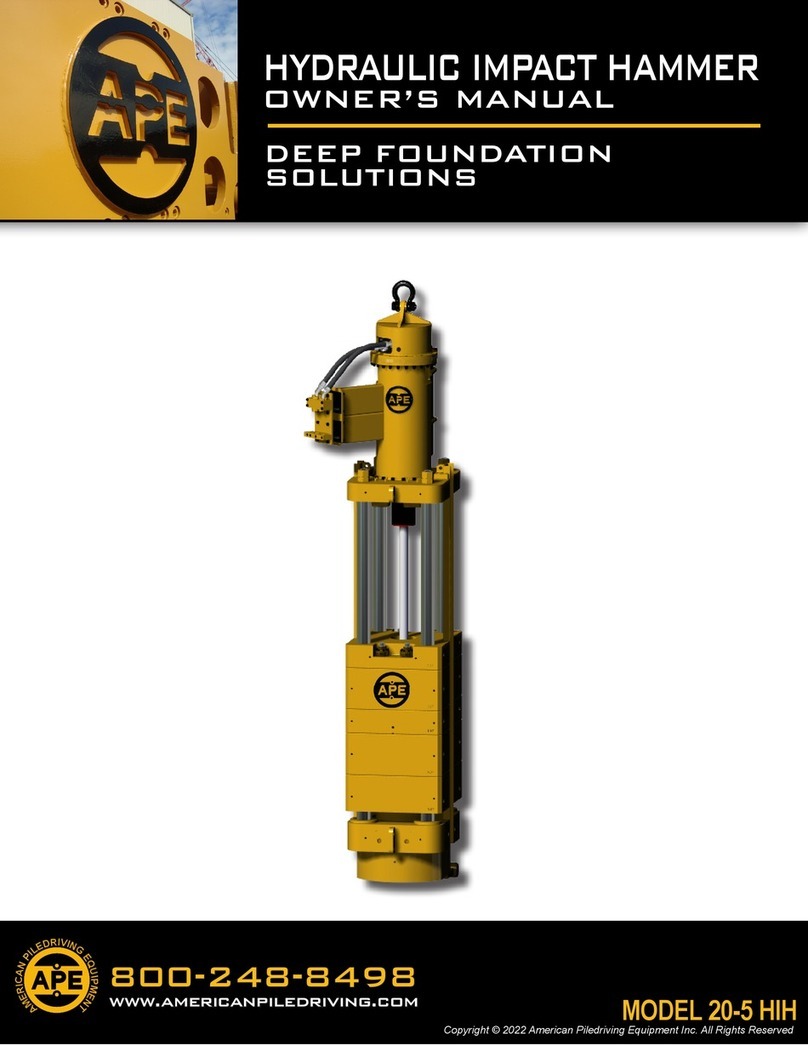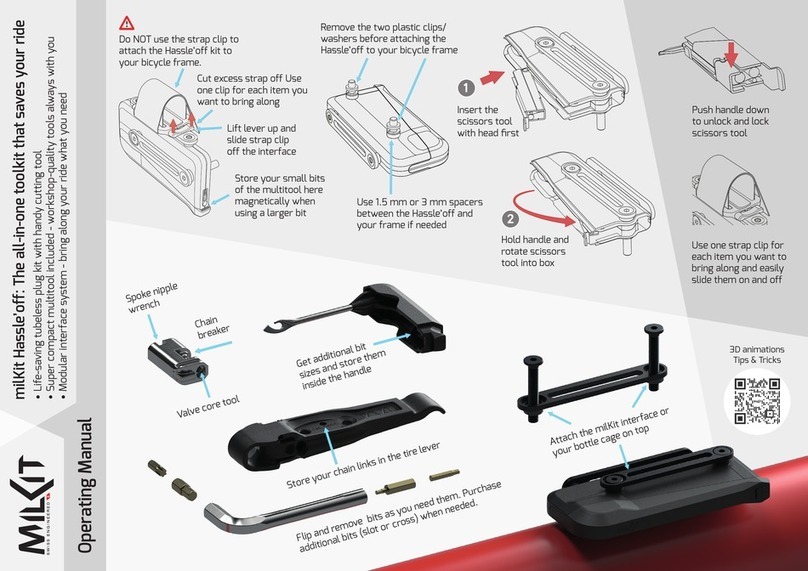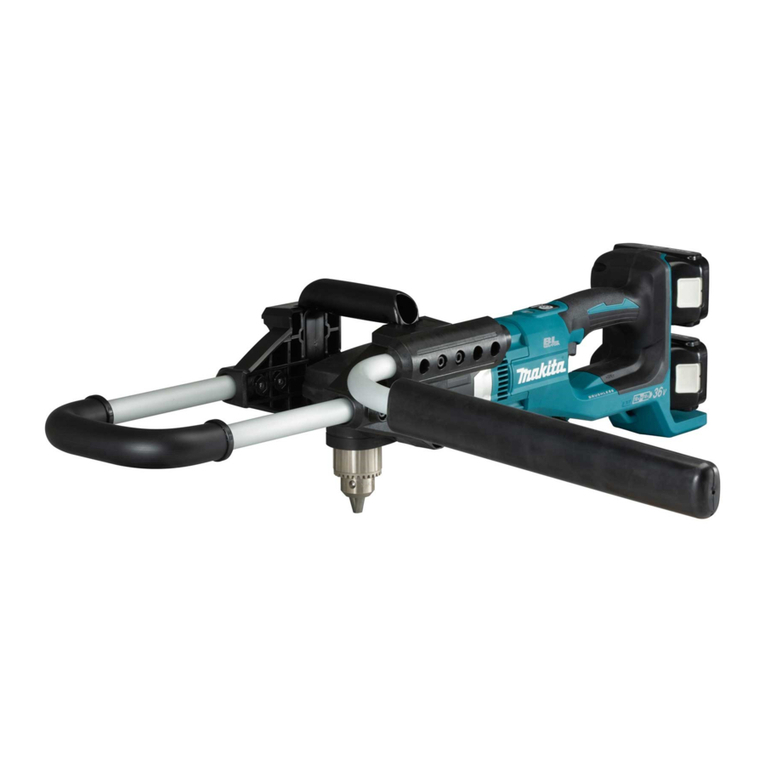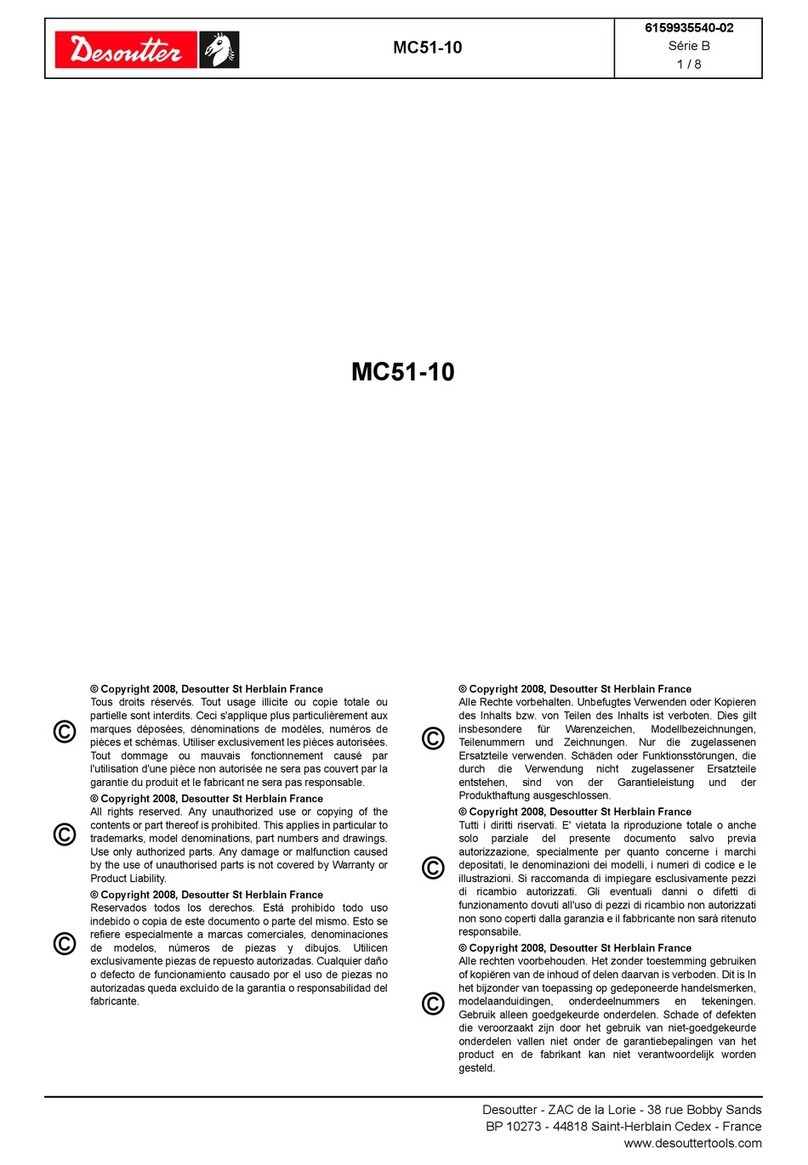OTC Tools 1525 User manual

Sheet No.
Issue Date: Rev. G March 26, 2012
© 2001 SPX
Form No. 107156
Parts List &
Operating Instructions
for: 1525
Hydraulic Service Jack
Maximum Capacity: 1.8 Metric Tonnes (2 Tons)
655 EisEnhowEr DrivE
owatonna, Mn 55060-0995 Usa
PhonE: (507) 455-7000
tEch. sErv.: (800) 533-6127
Fax: (800) 955-8329
orDEr Entry: (800) 533-6127
Fax: (800) 283-8665
intErnational salEs: (507) 455-7223
Fax: (507) 455-7063
Original Instructions
1 of 4
Explanation of Safety Signal Words
The safety signal word designates the degree or level of hazard seriousness.
DANGER: Indicates an imminently hazardous situation which, if not avoided, will result in death or
serious injury.
WARNING: Indicates a potentially hazardous situation which, if not avoided, could result in death or
serious injury.
CAUTION: Indicates a potentially hazardous situation which, if not avoided, may result in minor or
moderate injury.
CAUTION: Used without the safety alert symbol indicates a potentially hazardous situation which, if not
avoided, may result in property damage.
Description:
Hydraulic service jack used to lift a
wide variety of motor vehicles.
Saddle Low Point: 95.25 mm (33/4in.)
Saddle High Point: 571.50 mm (221/2in.)
Lifting Range: 476.25 mm (183/4in.)
Handle Length: 121.9 cm (48 in.)

Parts List & Operating Instructions Form No. 107156, Sheet 1 of 4, Back
Safety Precautions
CAUTION: To prevent personal injury and/ or property damage,
•Study, understand, and follow all safety precautions and operating instructions before
using this service jack. If the operator cannot read instructions, operating instructions
and safety precautions must be read and discussed in the operator’s native language.
• Onlyqualiedoperatorsmayinstall,operate,adjust,maintain,clean,repair,inspect,or
transport this service jack.
•Wear eye protection that meets ANSI Z87.1, CE EN166, AS/NZS 1337, and OSHA
standards.
•The service jack is designed to elevate cars and light trucks. Do not use this service jack
for anything other than its intended purpose.
•Before using the service jack to lift a vehicle, refer to the vehicle service manual to determine
recommended lifting surfaces on the vehicle chassis.
•Do not exceed the rated capacity shown on the service jack.
•Use the service jack on a hard, level surface with wheels and casters level.
•Center the load on the jack saddle. Off-center loads can damage seals and cause jack
failure. Lift only dead weight.
•Do not use blocks or other extenders between the saddle and the load being lifted.
•Do not move the jack while it is supporting a vehicle.
•Use approved vehicle support stands to support the vehicle before beginning repairs on
the vehicle.
•Stay out from underneath a load that is being lifted or lowered. Never position any part of
your body near the moveable elements of the jack.
•Lower the jack slowly and carefully while watching the position of the jack saddle.
•No alteration shall be made to this product. Do not adjust the overload valve.
• Useonlyapprovedhydraulicuid(ChevronAWHydraulicoil,orequivalent).Theuseof
alcohol,hydraulicbrakeuid,ortransmissionoilcoulddamagesealsandresultinjack
failure.
•Inspect the condition of the service jack before each use; do not use if damaged, altered,
or in poor condition.
•Use only those repair parts called out in the parts list in this document. Items found in the
parts list have been carefully tested and selected by SPX Service Solutions.

Sheet No.
Issue Date: Rev. G March 26, 2012
© 2001 SPX
Parts List & Operating Instructions Form No. 107156
2 of 4
Parts List
1
2
4
3
9, 10 7
11, 12
13
5
6
8
Item Part No.
No. No. Req'd Description
1 529219 1 Saddle, Pad, Retaining Ring
2 511818 1 Decal
3 501817 1 Grease Fitting
4 501238 1 Handle Assembly
5 512223 1 Handle Return Spring
6 517079 1 Handle Retaining Bolt and Nut
7 501288 2 Caster
8 10236 2 Washer
9 10252 2 Lockwasher—19 mm (3/4 in.)
10 10397 2 Nut—19 mm (3/4 in.)
11 15953 2 Washer—19 mm (3/4 in.)
12 14855 6 Retaining Ring—19 mm (3/4 in.)
13 501800 2 Front Wheel
512228 1 Hydraulic Assembly (see back of this sheet for
repair kit part numbers)

Parts List & Operating Instructions Form No. 107156, Sheet 2 of 4, Back
Figure 1
jn jn
Parts marked with an asterisk (j) are included in Seal Kit
No. 512218.
Parts marked with a triangle (s) are included in Pump
Release Valve / U-Joint Repair Kit No. 512220.
Parts marked with a box (n) are included in Pumping
Station Repair Kit No. 512221.
n
j
j
j
js
js
js
j
j
j
j
j
Replacement Kits
Operating Instructions
Setup
No. 517079
Bolt and Nut
Nut
Bolt
1.
Loosen the bolt on the front of the handle socket. See Figure 1.
2. Grease the socket opening; insert the handle.
3. Tighten the bolt enough to retain the handle, but still be able to
rotate the handle freely.
4. Hold the bolt steady, and tighten the nut against the socket to
lock the bolt in place.
5. Refer to the vehicle service manual to determine recommended
lifting surfaces on the vehicle chassis.
Bleeding Air from the System
Note: Before each use, remove any air that has accumulated in the jack system.
Air can accumulate within a hydraulic system during shipment, or if the oil supply runs too low. This entrapped
air causes the jack to respond slowly or feel “spongy.” The following procedure bleeds air from the system.
1. Remove the jack from service, and place it on a level surface.
2. Open the release valve by turning the handle all the way counterclockwise (CCW).
3. Pump the handle six full strokes.
4. Close the release valve by turning the handle all the way clockwise (CW).
5. Pump the handle until the lift arm is fully extended.
6. Lower the lift arm by turning the handle all the way counterclockwise (CCW).
7. Test the jack for normal operation. If the lift pad doesn’t rise to the correct height, repeat Steps 2–6. If this
doesn’t solve the problem, call the OTC Technical Services Dept. at (800) 533-6127.

Sheet No.
Issue Date: Rev. G March 26, 2012
© 2001 SPX
Parts List & Operating Instructions Form No. 107156
Lifting Operation
1. Close the release valve by turning the handle clockwise (CW) as far as it will go.
2. Position the jack under the vehicle. CAUTION: To prevent equipment damage, use the manufacturer’s
recommended lifting points on the chassis.
3. Pump the jack handle to raise the saddle to the contact point.
4. Check the placement of the jack; the load must be centered on the jack saddle. CAUTION: To prevent
equipment damage, avoid wheel obstructions such as gravel, tools, or uneven expansion joints.
5. Finish lifting the vehicle by pumping the handle. Do not attempt to raise the jack beyond its travel stops.
6. Place approved support stands under the vehicle at points that will provide stable support. Before making
repairs on the vehicle, lower it onto the support stands by SLOWLY and CAREFULLY turning the handle
counterclockwise (CCW).
Lowering Operation
CAUTION: To prevent personal injury, before lowering a vehicle, ensure that no person or obstacle
is under the vehicle.
1. Lift the vehicle just far enough to remove the support stands from under the vehicle.
2. SLOWLY turn the release knob counterclockwise (CCW) to lower the vehicle completely.
3 of 4
Inspection
CAUTION: To prevent personal injury,
• Onlyqualiedpersonnelshallperforminspectionsandrepairstothisservicejack.
•Before each use, an approved inspector must inspect the service jack for bends, cracks, dents,
elongated holes, or missing hardware. If damage is found, discontinue use.
•Use only those repair parts called out in the parts list in this document. Items found in the parts
list have been carefully tested and selected by SPX Service Solutions.
CAUTION: Dirt is the greatest single cause of failure in hydraulic units. Keep the service jack clean
and well lubricated to prevent foreign matter from entering the system. If the jack is exposed to
rain, snow, sand, or grit, it must be cleaned before it is used.
Inspection
Before each use, an approved inspector must inspect the service jack for the following conditions:
Cracked or damaged housing Excessive wear, bending, or other damage
Leakinghydraulicuid Scoredordamagedpistonrod
Loose hardware Malfunctioning swivel heads or adjusting screw
Modiedoralteredequipment
If any of these conditions are found, discontinue use of the jack until corrective action has been
performed.

1. A minimum of once a month, lubricate the moving parts of the jack
(indicated by arrows in Figure 2).
2. Every three months, add grease to the upper grease nipple.
3. A minimum of once a year,drain,ush,andreplacetheoilinthe
jack reservoir.
•Only use type HL or HM hydraulic oil with an ISO grade of kinematic
viscosity of 30 cSt at 40° Celsius, or any approved anti-wear hydraulic
jack oil.
• Donotoverllthejackreservoirwithoil.Tochecktheoillevel:
Place the service jack on level ground and lower the lift arm completely.
Removetherubberllerplug.Theoillevelshouldbeatthebottom
ofthellerplughole.Ifneeded,addapprovedanti-wearhydraulic
jackoil.Reinstallthellerplug.
Parts List & Operating Instructions Form No. 107156, Sheet 3 of 4, Back
CAUTION:Theuseofalcohol,hydraulicbrakeuid,detergentmotoroil,ortransmissionoilcould
damage the jack seals and result in jack failure.
Repair
When repairing the service jack, use only those repair parts called out in the parts list in this document.
Items found in the parts list have been carefully tested and selected by SPX Service Solutions.
Storage
Store the jack in a well-protected area away from corrosive vapors, abrasive dust, or other harmful
elements. When the jack will not be used for a prolonged period of time, store it with its lifting arm fully
retracted to avoid corrosion of the piston rod.
Disposal
When disposing of a worn or damaged jack, drain it of all hydraulic oil and give the oil to an authorized
agent for disposal. Dispose of the jack in accordance to all state, federal, and local regulations.
Upper
Grease
Nipple
Figure 2
Maintenance

Sheet No.
Issue Date: Rev. G March 26, 2012
© 2001 SPX
Parts List & Operating Instructions Form No. 107156
IMPORTANT PRODUCT INFORMATION
Recordserialnumberandyearofmanufactureforfuturereference.Seeproductidentication
label on unit for information.
1525
Serial Number: Year of Manufacture:
Troubleshooting Guide
Repairproceduresmustbeperformedinadirt-freeenvironmentbyqualiedpersonnelwhoarefamiliarwith
this equipment.
CAUTION: To prevent personal injury or damage to equipment, all inspection, maintenance, and
repairproceduresmustbeperformedwhenthejackisfreeofaload(notinuse).
Trouble Cause Solution
Jack does not lift 1. Release valve is open.
2. Low/no oil in system.
3. Air-locked system.
4. Load is above capacity of jack.
5. Delivery valve and/or bypass valve not
working correctly.
6. Seals worn out or defective.
1. Close release valve by turning handle CW.
2. Fill with oil and bleed system.
3. Bleed system.
4. Use correct equipment.
5. Clean to remove dirt or foreign matter.
Replace oil.
6. Install seal kit No. 512218.
Jack lifts only partially 1. Too much or not enough oil. 1. Check oil level.
Jack advances slowly 1. Pump not working correctly.
2. Leaking seals.
1. Install seal kit or replace power unit.
2. Install seal kit No. 512218.
Jack lifts load, but doesn't hold 1. Cylinder packing is leaking.
2. Valve not working correctly
(suction, delivery, release, or bypass).
3. Air-locked system.
1. Install seal kit No. 512218.
2. Inspect valves. Clean and repair seat
surfaces.
3. Bleed system.
Jack leaks oil 1. Worn or damaged seals. 1. Install seal kit No. 512218.
Jack will not retract 1. Release valve is closed. 1. Turn handle all the way CCW and open or
clean release valve.
Jack retracts slowly 1. Cylinder damaged internally.
2. Return spring is damaged.
3. Link section is binding.
1. Send jack to OTC authorized service
center for repair.
2. Replace return spring.
3. Lubricate link section.
4 of 4
Table of contents
Other OTC Tools Tools manuals
